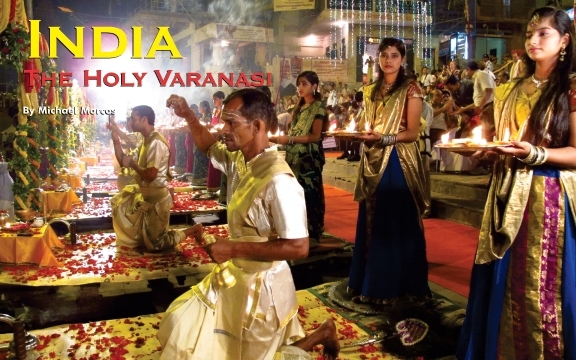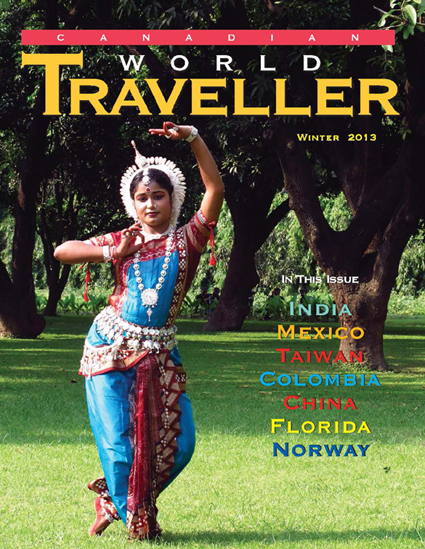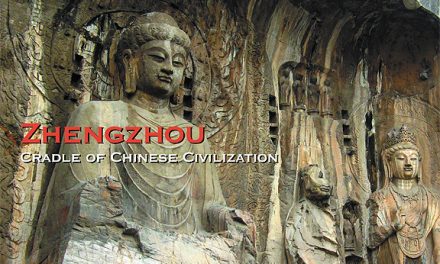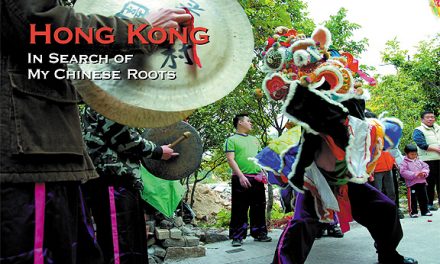India
The Holy Varanasi
Published in the Winter 2013 Issue of Canadian World Traveller
By Michael Morcos
 To experience the heart of Indian culture, travelers often make a pilgrimage to the holiest and oldest city inside this massive country. Varanasi has one of the most deep and complex histories stemming from it’s involvement with the sacred Ganges River that runs through it. Most people never forget going to this place, as it’s a complete bundle of antique architecture, seas of people and the scent of spice. It can get overwhelming, but guests who see India first hand need to simply go with the flow and discover the welcoming and exotic nature of Varanasi. I spend much of my time simply with eyes and mind wide open, allowing me to indulge in the holy temples, beautiful river scenes and historical hotspots in the City of Lights.
To experience the heart of Indian culture, travelers often make a pilgrimage to the holiest and oldest city inside this massive country. Varanasi has one of the most deep and complex histories stemming from it’s involvement with the sacred Ganges River that runs through it. Most people never forget going to this place, as it’s a complete bundle of antique architecture, seas of people and the scent of spice. It can get overwhelming, but guests who see India first hand need to simply go with the flow and discover the welcoming and exotic nature of Varanasi. I spend much of my time simply with eyes and mind wide open, allowing me to indulge in the holy temples, beautiful river scenes and historical hotspots in the City of Lights.
The spiritual side of Varanasi
As in many parts of India, the local people are religious and have adapted philosophies from Hinduism, Islam and Buddhism. In particular, those who follow the Buddhist faith find Varanasi to be one of the holiest places in the world. Many believe this so strongly that they think if a person who has passed away is incinerated in the city, they will quickly reach Nirvana and leave the ongoing cycle of life and death.
Buddhism reigns supreme
While Hinduism and Islam are the biggest majorities of religion in Varanasi, this site is where Siddhartha Gautama gave his first sermon on what it takes to follow Buddhism. Many of his believers travel to Varanasi and its suburbs to walk the footsteps of their prophet, meditating further on their beliefs. The preaching of freeing oneself from suffering and attempting to reach a higher level of understanding is cherished by thousands, especially many of those who call Varanasi home.
I journeyed to a Buddhist conclave in the city, where theses faithful individuals gather to discuss issues from present day and how to walk through life more closely with Buddhist tradition. It gave insight into what this religions hold valuable and how it’s managed to remain a significant influence in a predominantly Hindu and Islamic city.
An early morning boat ride on the Ganges
Many pilgrims and travelers who are able to rise early in the morning are rewarded with a spectacular sunrise. The holy environment has an almost palpable spirituality, especially when the early risers are just starting to go about their day along the coast and in their boats. While the water is not clear or aesthetically pleasing, knowing how much history and reverence surround this waterway makes it beautiful in a memorable way. The buildings, residential areas and holy temples that line the river are all part of the ambiance that gives Varanasi an exotic and unique allure.
While somewhat morbid, one of the most interesting things to see while peering onto the shore is the places that cremate lost loved ones. It is common practice to allow bodies to be burned with special wood to help them reach Nirvana and their second life more quickly. I saw small piles of flames could be viewed from the boat, while small bits of ashes sometimes flew into the air from the process. Life in Varanasi tends to revolve around the Ganges in a dutiful way, from washing small children for their baths in the morning to laying people to rest at the end of their time.
Witnessing the Dashashwamedh Ghat
Gliding along the Ganges was a thrill, but I enjoyed even more staying on shore and visiting this sacred area. A ghat in India is a set of stairs that lead straight into a waterway, used by locals and tourists to sit on, wash clothes and bathe, bless themselves or meditate. Oftentimes special festivals and celebrations take places at these ghats as well to honor the dead and pay homage to Hindu gods. The Dashashwamedh Ghat is near the Vishwanath temple and is one of the most popular and impressive looking ones on the river.
Nightly ceremony on the Ganges
Everyday, a group of priests participate in a ceremony meant to honor various deities, including Surya of the sun and Angi of the fire. This “Ganga aarti” event happens every night and is a sight to see, complete with smoking incense, chanting, singers and traditional movement. Hundreds come out to see the spectacle that looks especially inspiring after nightfall with the starry night sky above.
However, the tranquil and mystifying ambiance was interrupted by a lost cow. These animals in India are considered sacred and are permitted to wander around many public areas, often disrupting every life, especially in urban areas not equipped for farm creatures. A little chaos ensued and the audience ended up being quite distracted by this one ton animal. The amusing turn of events truly made my visit to the Dashashwamedh Ghat a once in a lifetime happening.
A trip to the Sarnath museum
Due to the large population in Varanasi and throughout the country, sometimes artifacts and old archaeological sites can easily get damaged. Officials do what they can do preserve things once they are discovered, which is evident at the Sarnath Museum in town. I learned this site is both a walk-through attraction as well as a place where there are ongoing excavations. I first walked through the outdoor areas to see the protected buildings and monuments, then made my way inside to view more than 6,000 artifacts and sculptures collected in and around the city.
The main piece and focal point of the archaeological survey is the Ashoka pillar. This piece is so important to the people it is on the Indian currency coins. Part of the pillar remains indoors in the museum to keep it preserved, while another piece is in the excavation area. This structure is part of a series erected by Ashoka the emperor around 240 B.C..
The Dhamek Stupa at night
This city never seems to sleep, as tourists tend to check out attractions at all times of day. I loved this beautiful temple, especially in the quiet after sundown. The temple is very large and staggering to see when standing at the base of its giant main building. During the pilgrimage of Buddhists, this is also one of the most prominent spots to pay respects to for its history and spiritual setting. Even if visitors are not interested in Buddhism, they can appreciate the intricately designed floral carvings and pretty atmosphere.
The religious site of Bodh Gaya
Buddha travel throughout Varanasi and gave speeches, lives and worked at various temples. But where he was said to have reached enlightenment is in this sacred space. People who practice Buddhism put Bodh Gaya on their list of the top four places to pilgrimage to during their lifetime. Since travelers from all over the world have been heading here for the past 2,500 years, it is easily now one of the holiest locations to witness.
One of the highlights was going to the most amazing Mahabodhi Temple, or stupa. The incredibly tall structure and the vast compound was saved from the Moguls, who destroyed all Buddhist temples in the past, by being intentionally buried in ground for centuries. This story alone made me want to see it in person for myself, and the trip to Bodh Gaya was well worth it. The temple is so majestic it was honored as a UNESCO World Heritage Site.
No matter one’s personal religion or lack thereof, a visit to the holy city of Varanasi can be a fantastic way to understand the inner workings of India’s people and their unwavering faith. For centuries people have said that whoever lives in the city will reach eternal salvation. Even though I was only passing through, perhaps a little bit of that devotion and love rubbed off on me too and I’ll be a better person because of experiencing one of India’s most fascinating destinations.


















